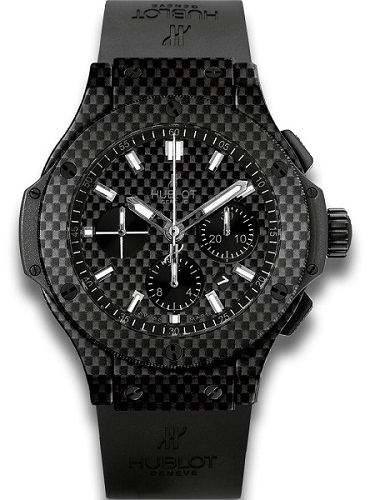connect with the hour glass
New Watch! • 02 Feb 2017
How To Choose The Right Case Material For Your Watch
Modern horology is not defined by functionality, since phones tell the time, or movement technology, the principles of a mechanical watch haven’t changed in two centuries, but rather the materials and construction of the case.
Watch lovers today have more case materials than ever to choose from, and luxury timepiece makers are keen to introduce new looks and textures in order to keep enthusiasts interested.
Let’s take a quick look at the most popular materials choices today in helping to understand their strengths and how to select among an ever-growing selection of materials to strap on your wrist.
It was once the fact that more or less all watches came in metal cases. Today metal alloys are joined by a range of non-metallic options, but metal continues to remain the most popular material for cases. Metal is popular for a lot of reasons, including its ability to be easily machined in various shapes as well as its ability to be polished or otherwise decorated.
Steel remains by far the most popular metal choice thanks to its relative durability, wear resistance, and ability to hold a fine polish. Steel is also affordable, and unlike gold or other precious metals, steel tends to not have a price premium simply for the luxury of wearing it.
While the most basic material for a watch case steel need not necessarily be cheap. If you really want to evoke a luxury feel but still wear steel, go with something like an Audemars Piguet Royal Oak. The original watch that was priced like gold but made of steel, the Royal Oak has a vividly complicated finished on the octagonal case that shows of the metal in its finest glory.
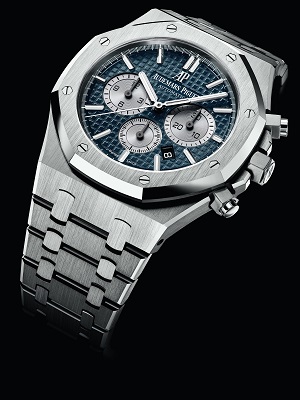
Audemars Piguet Royal Oak Chronograph
After steel the most popular metal these days is titanium. Lighter and slightly more expensive than steel, titanium is darker in hue, being a dark grey, and also more prone to scratches, being softer.
Titanium is preferred for the strength it offers as well as the weight savings over steel – it is a less dense metal – but wearers must be keen to be careful with a titanium if they are looking to maintain that new watch look. Often bringing with it connotations of high-tech endeavors like Formula 1 and aerospace engineering where titanium is commonly used, the metal is frequently found in sporty, technical watches, combined with other high tech materials like ceramic and carbon fiber.
One alternative to a traditional metal like steel or titanium is Sinn’s Tegiment process, a hardening technique available for some steel and titanium watches that makes the surface metal harder, and thus more scratch resistant. The Sinn U1 dive watch for example has its bezel Tegiment treated, protecting the part that is most prone to scratches.
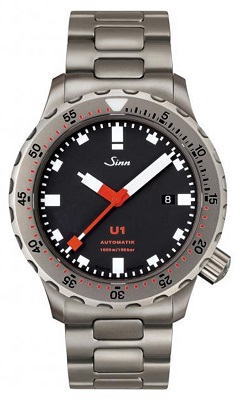
Sinn U1
Gold, in its various alloy choices, remains the most popular luxury metal – mainly because of its obvious visual differentiation from steel. Gold is softer than steel but also heavier. It will scratch more easily, but can be polished with a bit more luster.
White gold is the most similar in appearance to steel, and can be confused for platinum, another precious metal that is both heavy and delicate to wear. For a long time 18k yellow gold was seen as out of fashion, which is odd because for most light skin tones yellow gold looks best.
Red, pink, and rose gold have been popular for the last decade or so given its ability to look a bit warmer, and is a color that looks better on darker skin tones. Brands like Patek Philippe have always offered all three gold alloys for its various watches, so those curious about which looks best might just want to try on a variety of their dress watches to see what gold looks best on them.
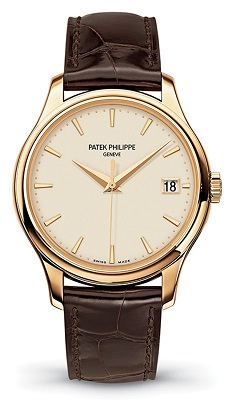
Patek Philippe Calatrava Ref 5227J
Next to metal the most popular watch material choices are ceramic and carbon fiber. Both are often deemed high-tech materials, given the fact that special machinery or construction is necessary to form and fabricate such cases, even if the base materials themselves are not precious per se.
Most ceramic watch cases are zirconium oxide, which typically comes in black, white, or other dark tones. The advantage of ceramic is both the stability of its color (that never fades over time) as well as the extremely hard surface of ceramic, which makes it very scratch resistant.
Carbon fiber reinforced polymer, commonly known as carbon fiber, is among a family of carbon-based materials that watch makers are increasingly using for watch cases. Initially the appeal of carbon fiber was its distinctive weave, a look often found in fields as diverse as racing automobiles to high-end furniture. Carbon fiber, when produced properly, allow for very precise machining and is very hard – as well as light.
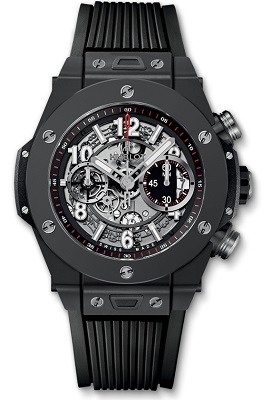
Hublot Big Bang Unico Black Ceramic
Carbon fiber watches tend to evoke the world of performance as well as contemporary technology – which traditional watch makers like given the material’s ability to make their products more relevant to other passions shared by watch lovers these days. At the high-end brands like Hublot and Richard Mille are arguably among the best at making use of materials such as ceramic as well as carbon fiber and other carbon materials.
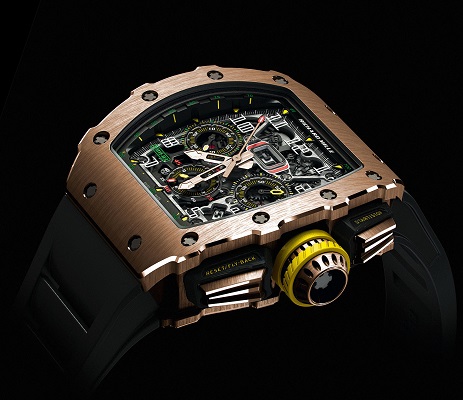
Richard Mille RM 11
For more information, please schedule an appointment with our Sales Consultant here.



